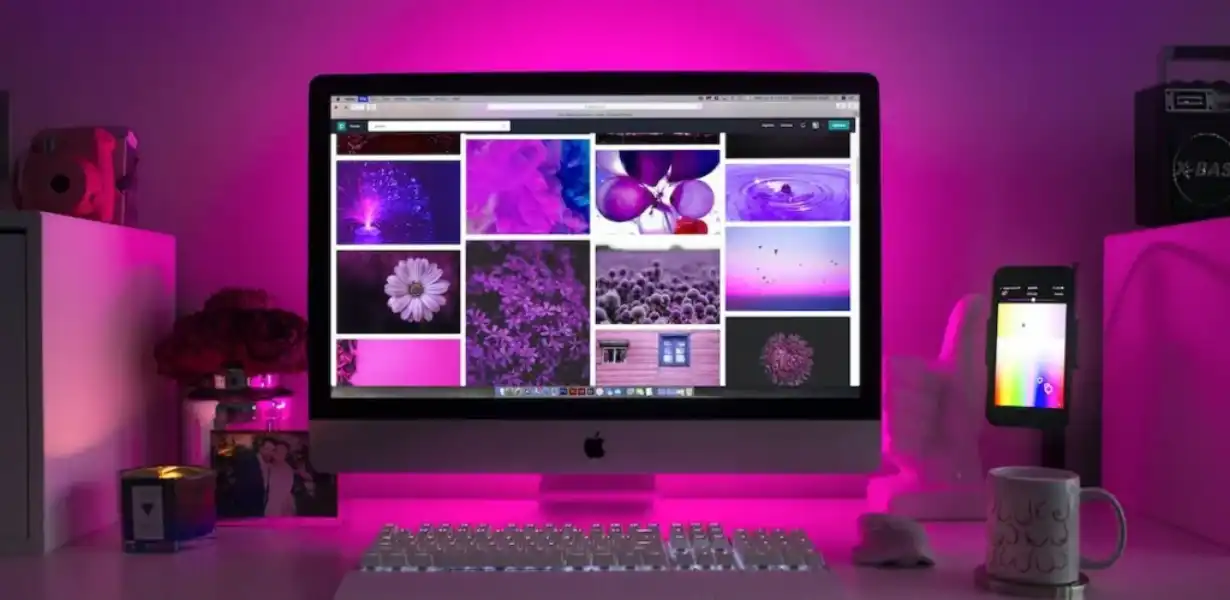
Beyond the Rainbow: The Art of Gradients in UI/UX Design
- Post
- August 7, 2023
- Gradients, Web Design, Web Design Trends
- 0 Comments
We delve into the captivating world of UI/UX design, where colors blend seamlessly, giving birth to the mesmerizing art of gradients. In this comprehensive blog, we explore how gradients have become an essential tool for modern designers, adding depth, dimension, and vibrancy to digital interfaces. From gradient website templates to gradient background generators, we uncover the secrets and techniques that will elevate your designs to new heights.
Embracing the Color Spectrum
Gradients have transcended their humble beginnings and emerged as a powerful design element. They allow designers to create visually stunning and engaging user experiences, captivating users from the moment they land on a webpage. The smooth transition of colors in gradients provides a sense of fluidity, drawing users into the content and guiding their eyes effortlessly across the interface.
The use of gradients in UI/UX design has become ubiquitous, as it enables designers to evoke emotions, establish brand identity, and communicate a message effectively. Let’s embark on this journey to uncover the magic of gradients and how they have transformed the digital landscape.
The Power of Gradients: Aesthetic Appeal and Emotional Impact
Gradients offer a wide array of benefits in UI/UX design, contributing to both aesthetics and emotional appeal. Here’s why they play a vital role in capturing the audience’s attention:
Enhancing Visual Depth and Dimension
Gradients add depth to flat designs, making elements appear more lifelike and immersive. By skillfully blending colors, designers create a sense of realism, making users feel like they are interacting with tangible objects.
Creating a Memorable Brand Identity
Brands can harness the power of gradients to establish a unique and recognizable identity. The strategic use of colors in gradients helps reinforce brand personality, leaving a lasting impression on users’ minds.
Guiding User Attention
Gradients serve as visual cues, directing users’ focus to essential elements on the screen. By employing gradients strategically, designers can lead users through the user interface, ensuring a seamless and intuitive user experience.
Eliciting Emotions and Evoking Engagement
Colors hold the key to emotions, and gradients wield this power skillfully. Designers leverage the psychology of colors to evoke specific feelings, influencing user behavior and encouraging engagement.
Mastering the Art: Tips for Using Gradients in UI/UX Design
To create stunning designs, it’s crucial to master the art of using gradients effectively. Here are some practical tips to elevate your design game:
Understand Color Theory
Before diving into gradients, grasp the fundamentals of color theory. Familiarize yourself with the color wheel, complementary colors, analogous colors, and how they interact to create harmonious designs.
Choose the Right Color Palette
Selecting the perfect color palette is paramount. Consider your brand’s personality, target audience, and the emotions you wish to evoke. Tools like Adobe Color and Coolors can assist you in finding the ideal gradient combinations.
Maintain Consistency
Consistency is key in UI/UX design. Stick to a cohesive color scheme throughout your design to ensure a harmonious and polished appearance.
Subtle vs. Bold Gradients
Gradients can be subtle or bold, depending on the design’s requirements. Experiment with both to see which best complements your project’s vision.
Test for Accessibility
Remember to check your gradients for accessibility, ensuring that the color choices do not impede users with color vision deficiencies.
The Tools of the Trade: Gradient Website Templates and Background Generators
As the demand for gradient-rich designs grows, so does the availability of tools that streamline the design process. Two essential tools in a designer’s arsenal are gradient website templates and background generators.
Gradient Website Templates
Pre-designed website templates with built-in gradients offer a quick and efficient way to create visually appealing websites. They come with various customizable options, saving time and effort for designers.
Gradient Background Generators
For more customized designs, gradient background generators allow designers to experiment with different colors and styles. These tools generate CSS code or downloadable images for seamless integration into projects.
Commonly Asked Questions
1. What Is the Best Way to Use Gradients in Call-to-Action Buttons?
Gradients can enhance the visibility and attractiveness of call-to-action buttons. Use bold, contrasting colors to make the buttons stand out, while ensuring that they complement the overall design.
2. How Can I Create Smooth Transitions in My Gradients?
Achieving smooth transitions requires subtle changes in color values. Utilize design software with gradient editing capabilities and preview options to fine-tune the gradients.
3. Are Gradients Suitable for Minimalistic Designs?
Absolutely! Gradients can add depth and visual interest to minimalistic designs. Opt for subtle gradients that maintain the simplicity while adding a touch of sophistication.
4. Which Brands Have Successfully Leveraged Gradients in Their Designs?
Numerous brands, such as Instagram, Spotify, and Apple, have effectively used gradients to reinforce their brand identities and create memorable user experiences.
5. How Can I Ensure My Gradients Are Accessible to All Users?
To ensure accessibility, use contrast-checking tools to verify that the color combinations in your gradients meet accessibility standards. Aim for sufficient contrast between text and background.
Final Words
As we conclude this journey into the art of gradients in UI/UX design, we have witnessed the transformative power of colors in shaping digital experiences. Gradients have transcended beyond their aesthetic appeal to become a vital tool for designers to communicate emotions, establish brand identity, and guide user interactions. Embrace the art of gradients and unleash the full potential of your designs, captivating users with every color transition.




